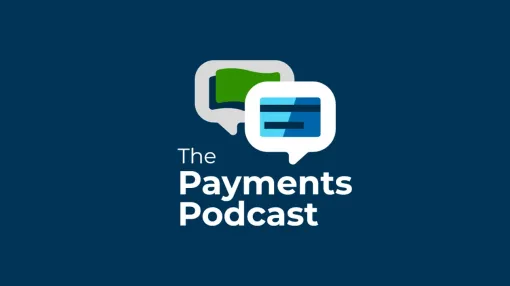Next up in our 2024 Business Payments Outlook series we have Alan Koenigsberg, Senior Vice President and Global Head of Large, Middle Market, Treasury and Working Capital Solutions at Visa.
He took note of the rapid pace of acceleration in digital payments across the commercial industry.
For Visa, our issuers and their corporate clients, tracking the future of payments and laying the groundwork comes down to just a few areas of focus. I call them the “big five,” and with these as a roadmap, companies can seek to proactively change their business models and meet customers where they want to be met.
Innovation can serve all types of businesses, whether small, mid-market or enterprise-class operations – and Visa, alongside its network of partners/providers, are leveling the playing field for customers.
The commercial payments space can often be more complicated than consumer payments, but at the end of the day, it’s all about paying and getting paid. In 2024, Visa will continue to help financial institutions deliver solutions that provide value for their customers and simplify complex processes.
Automation and Digitization
Automation and digitization are getting a tailwind from cloud computing and fostering a “quantum” leap that makes innovation cycles move faster, but I don’t think rapid acceleration can be boiled down to speed alone. Automation and digitization often mean the redesigning of a company’s payment processes, and there’s plenty of that to go around because there are several friction points in the basics of AP and AR that can be made smoother by automated processes. For example, AP automation allows you to control spending, optimize cash flow and pay suppliers. That goes beyond speed and efficiency.
Cutting down on manual tasks and paper-based processes also helps cement a bridge for executives as they move from manual, outdated processes, to a new digital and streamlined approach. The most significant challenge to B2B is that there are so many solutions providers out there, but a persistent lack of standards across the industry.
Artificial Intelligence
At Visa, we’ve been utilizing AI for over 30 years, even back when only science magazines were covering it. Now, you can’t pick up the Financial Times without reading about some kind of government intervention or new commercial use. We've long been predicting behaviors and running risk models, and we're proud to have taken those very early steps.
In early November, we launched a new AI Advisory Practice offered by Visa Consulting & Analytics (VCA), our payments consulting arm, which focuses on providing actionable insights and recommendations to unlock the potential of AI. For example, accounts payable managers with generative AI running in the background, reading emails and invoices, can help automate payments flows. That level of automation can wind up bringing mass efficiencies to supply chains, rendering them healthier than ever.
Embedded Finance
Embedded finance has been adopted for consumer usage for quite some time. For example, just having the primary account number being integrated into e-commerce payments is a form of embedded finance validating an account number via an algorithm. Now, it's getting more sophisticated, and the acceleration is taking financial products and putting them into non-financial platforms, which banks should like because it gives them another touchpoint with their customers. The advancements in APIs and open banking provide amazing opportunities to meet the customer wherever they are.
Embedded finance is no longer solely about payments; it’s about loans and a range of banking choices that create opportunities to digitize B2B payment flows and allow financial institutions to be able to distribute more of their solutions to their own enterprise customers.
Demand for working capital
To me, the demand for working capital is arguably the most important trend to follow in the commercial banking space next year. In fact, back in September, we launched Visa’s industry-first Working Capital Index, where global money movement appeared in the working capital dialogue as an important, opaque pain point for companies of all sizes.
We have a whole generation of bankers and treasurers and other financial leaders who don’t know a world with high interest rates. In the current environment, executives are now grappling with these higher interest rates, where the cost of capital is also more expensive — and managing working capital is a critical, day-to-day endeavor. The economics between buyer and supplier must be balanced.
When we line up an ACH and a wire and a card transaction, or a digital transaction for a payment, there’s a bit of a false narrative between which is a working capital tool and what’s simply a blunt instrument to move something from one ledger to another.
Virtual cards operate as a way to leverage several weeks to satisfy the payables outstanding. For the supplier, the benefit of card acceptance lies in being paid faster, and the benefit to all parties involved in the transaction lies in balanced economics. Acceptance is not a product; acceptance is an enabler.
Global Money Movement
Businesses need fast, transparent and internationally available fund flows to increase supply chain resilience. And while there has been a ton of innovation in this space, we’re still seeing unilateral platforms that inhibit full global access.
What we created with Visa B2B Connect, which continues to innovate and grow, is a platform based on multilateralism. It's designed to enable businesses to make cross-border payments directly from their bank to the beneficiary's bank, for what we think is a more streamlined, transparent, and secure way to make high-value international B2B payments.
Sometimes, we forget the human element to the payments business. We innovate, we change. The most important thing in cross-border payments is that we meet our clients and our client’s customers where they are on their journey. It’s our job to make that journey as efficient, timely and secure as possible.


